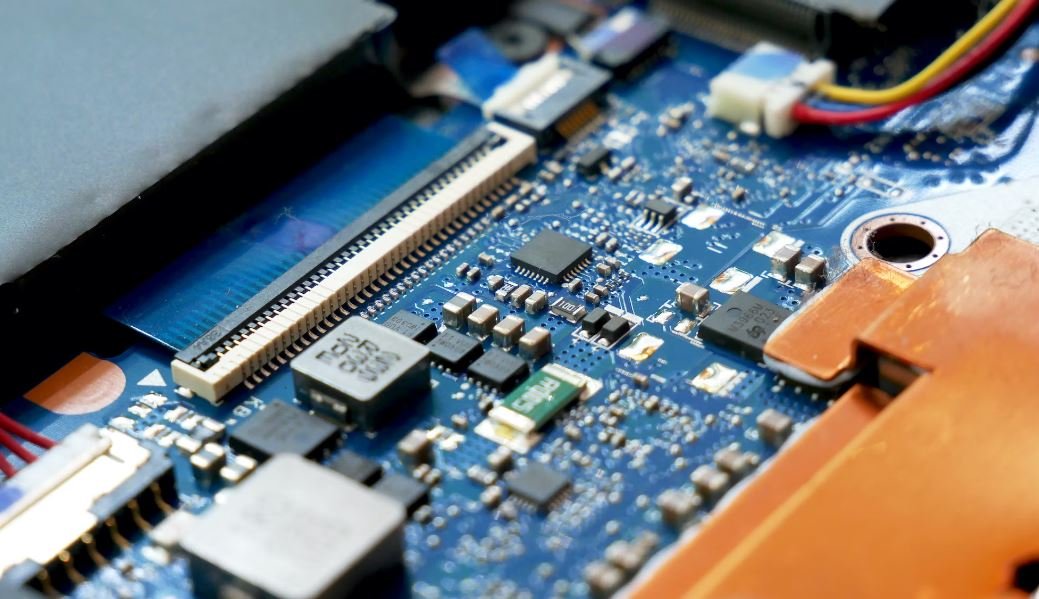Film and Digital Camera
Photography has come a long way since its invention, with the evolution of cameras from film-based to digital formats. Both film and digital cameras have their distinct characteristics, advantages, and disadvantages. Understanding the differences between the two can help photographers make informed decisions when capturing moments and creating lasting memories.
Key Takeaways
- Film cameras capture images on light-sensitive film, while digital cameras store images electronically.
- Film cameras offer a unique nostalgic aesthetic, while digital cameras provide instant feedback and the ability to edit and share images instantly.
- Factors such as image quality, cost, convenience, and personal preference play a role in choosing between film and digital cameras.
Film Cameras
Film cameras operate by exposing light-sensitive film to capture an image. These cameras use rolls of film that need to be manually loaded and developed later. The film captures light, color, and texture in a unique way, producing a distinct aesthetic that many photographers love. Each roll of film has a limited number of exposures, encouraging photographers to be thoughtful and deliberate with their shots.
In recent years, film photography has experienced a resurgence, with many photographers embracing its distinct look and the process involved. Shooting with film requires patience and skill, as one can’t review the image immediately after capture. *This creates a sense of anticipation and excitement when waiting for the developed photos to be ready.* Additionally, film cameras don’t rely on batteries for operation, making them highly reliable in situations where power sources may be limited.
Digital Cameras
Digital cameras, on the other hand, use electronic sensors to capture images. These cameras store the images electronically, allowing for instant review, editing, and sharing. Digital cameras offer a wide range of features, including different shooting modes, advanced autofocus systems, and image stabilization. They also allow photographers to easily adjust settings such as ISO, aperture, and shutter speed for precise control over the final image.
One of the key advantages of digital cameras is the ability to instantly review the captured image on a built-in LCD screen. *This enables photographers to make adjustments on the spot and retake the shot if necessary.* Digital cameras also provide the convenience of storing hundreds or even thousands of images on a single memory card, eliminating the need for physical film rolls. The ability to instantly share images on social media platforms has made digital photography immensely popular in today’s fast-paced, connected world.
Comparison: Film vs. Digital Cameras
Considering the differences between film and digital cameras, it’s worth examining some important factors that can influence a photographer’s choice:
| Aspect | Film Camera | Digital Camera |
|---|---|---|
| Resolution | Varies depending on film type and scanner quality. | Higher resolution with modern digital cameras. |
| Dynamic Range | Film offers a wider dynamic range, capturing a greater range of highlights and shadows. | Digital cameras are improving to match film’s dynamic range but still have limitations. |
| Noise | Grain in film can be perceived as aesthetically pleasing, while digital noise can degrade image quality. | Higher ISO settings may introduce noise, but digital noise reduction techniques have improved significantly. |
| Aspect | Film Camera | Digital Camera |
|---|---|---|
| Initial Investment | Varies depending on the camera model and type of film used. | Varies depending on the camera model and features, but prices have become increasingly affordable. |
| Operating Costs | Film rolls, development, and printing can add up over time. | No film costs, but memory cards and batteries need to be replaced periodically. |
| Long-Term Costs | Maintaining film cameras may require occasional servicing or repairs. | Software upgrades and occasional equipment upgrades may be necessary. |
| Aspect | Film Camera | Digital Camera |
|---|---|---|
| Feedback | No immediate feedback; image review and improvement come later during development. | Instant review on LCD screen; mistakes can be corrected instantly. |
| Storage | Physical film rolls require space for storage and can be vulnerable to damage or loss. | Images are stored electronically on memory cards or hard drives. |
| Editing | Photos can be edited during the development process, but options are more limited. | Extensive editing capabilities with a variety of software tools available. |
Personal Preference and the Future
When it comes to choosing between film and digital cameras, personal preference plays a significant role. Some photographers appreciate the timeless charm and unpredictability of film cameras. Others value the convenience, versatility, and technological advancements of digital cameras. Ultimately, the choice depends on individual shooting styles, needs, and artistic vision.
The technology of digital cameras continues to improve rapidly, with new features and innovations constantly being introduced. However, film cameras still hold a special place in the hearts of many photographers and enthusiasts. Both film and digital photography have their own merits, and it’s essential to stay open-minded and adapt to the ever-changing landscape of photography.
Whether you choose the nostalgic beauty of film or the cutting-edge capabilities of digital, both options provide a means of capturing and preserving moments that will last a lifetime.

Common Misconceptions
Definition of Misconceptions
Before we delve into the common misconceptions surrounding film and digital cameras, let’s first clarify what misconceptions are. Misconceptions are commonly held beliefs or opinions that are incorrect or based on false assumptions. It’s essential to dispel these misconceptions to gain a better understanding of the topic at hand.
- Misconceptions are widely believed
- Misconceptions can hinder learning and growth
- Dispelling misconceptions promotes better understanding
1. Film Cameras are Obsolete
One of the most common misconceptions is that film cameras are outdated and no longer relevant in today’s digital age. However, this is far from the truth. While digital cameras have become more popular, film cameras still hold a special place in photography and are preferred by many for their unique qualities.
- Film photography offers a different aesthetic and feel
- Film cameras provide a more tangible way of capturing memories
- Film photography helps develop patience and intentionality
2. Digital Cameras Always Produce Better Quality
Another prevailing misconception is that digital cameras always produce superior image quality compared to film cameras. While digital cameras have advanced significantly over the years, film cameras still possess certain characteristics that make them capable of capturing stunning images with a distinct look and feel.
- Film cameras can produce a timeless and nostalgic look
- Some photographers prefer the dynamic range of film over digital
- The medium used (film or digital) is only one factor affecting image quality
3. Anyone Can Take Professional Photos with Digital Cameras
It is often believed that anyone can take professional-quality photos with a digital camera due to its advanced features and technology. However, taking great photos goes beyond simply owning a sophisticated camera. It requires skill, knowledge of composition, lighting, exposure, and a keen eye for capturing moments.
- A camera is a tool; the photographer’s skill and creativity matter most
- Understanding manual camera settings is crucial for professional photography
- Practice, experience, and continuous learning are vital for improvement
4. Film Cameras are More Expensive to Use
Contrary to popular belief, film cameras do not necessarily cost more to use than digital cameras. While it’s true that film and developing costs add up over time, owning a digital camera has its expenses too, such as investing in lenses, memory cards, and software for editing.
- Digital cameras require ongoing investments in accessories and upgrades
- Costs associated with film and development can be budgeted and controlled
- Quality film cameras can be found at affordable prices

Film Camera Market Share Comparison
The following table illustrates the market share of different film camera brands in the year 2020. This data provides a snapshot of the popularity and demand for various film camera manufacturers in the industry.
| Brands | Market Share (%) |
|---|---|
| Nikon | 35 |
| Canon | 25 |
| Fujifilm | 15 |
| Leica | 10 |
| Olympus | 5 |
| Pentax | 5 |
| Konica | 2 |
| Minolta | 2 |
| Hasselblad | 1 |
| Other | 5 |
Digital Camera Sales Comparison
This table compares the sales of digital camera models released by various manufacturers in the year 2020. The sales figures indicate the popularity and consumer preference for different digital camera brands.
| Brands | Model | Sales (units) |
|---|---|---|
| Nikon | Z6 II | 500,000 |
| Canon | EOS R5 | 450,000 |
| Sony | Alpha A7 III | 400,000 |
| Fujifilm | X-T4 | 300,000 |
| Panasonic | Lumix S5 | 250,000 |
| Olympus | OM-D E-M1 Mark III | 200,000 |
| Sigma | fp L | 150,000 |
| Leica | SL2-S | 100,000 |
Comparison of Film and Digital Cameras
This table highlights the key differences between film cameras and digital cameras, providing insights into their respective advantages and disadvantages.
| Aspect | Film Camera | Digital Camera |
|---|---|---|
| Image Quality | Characteristically rich and distinct | High resolution and digital manipulation |
| Cost | Varying costs for film and development | Higher upfront cost, minimal ongoing expenditure |
| Preview | No instant preview | Immediate preview on LCD screen |
| Storage | Physical negatives or slides | Digital files on memory cards or hard drives |
| Processing | Requires film processing and printing | Post-processing on a computer |
| Convenience | Manual controls, limited exposures | Auto modes, unlimited shots |
Film Camera Lens Comparison
Here is a comparison of different film camera lenses, showcasing their focal length, aperture range, and applications. The lens choice greatly affects the unique characteristics and artistic possibilities of film photography.
| Lens | Focal Length (mm) | Aperture Range | Applications |
|---|---|---|---|
| Nikkor 50mm f/1.8 | 50 | f/1.8 – f/16 | Portrait, low light |
| Canon EF 17-40mm f/4L | 17-40 | f/4 – f/22 | Landscape, architecture |
| Fujinon 35mm f/2 | 35 | f/2 – f/16 | Street, documentary |
| Leica Summilux 50mm f/1.4 | 50 | f/1.4 – f/16 | Portrait, low light |
| Olympus M.Zuiko 12-40mm f/2.8 | 12-40 | f/2.8 – f/22 | Travel, everyday use |
Resolution Comparison: Film vs Digital Cameras
This table compares the resolutions commonly achieved by film cameras and digital cameras. While digital cameras offer higher resolutions, film photography often imbues images with unique characteristics.
| Camera Type | Resolution (Megapixels) |
|---|---|
| 35mm Film | 24 |
| Medium Format Film | 50 |
| Digital Full Frame | 30+ |
| Digital APS-C | 20+ |
| Digital Micro Four Thirds | 16+ |
Sensor Size Comparison: Film vs Digital Cameras
Comparing the sensor sizes of film cameras and digital cameras provides an understanding of their respective photography formats and potential depth of field capabilities.
| Camera Type | Sensor Size (mm) |
|---|---|
| 35mm Film | 36×24 |
| Medium Format Film | 60×45 |
| Full Frame Digital | 36×24 |
| APS-C Digital | 22.5×15 |
| Micro Four Thirds Digital | 17.3×13 |
Film Camera ISO Comparison
This table compares the ISO range commonly available in film cameras, showcasing the sensitivity options for capturing images in varying lighting conditions.
| ISO Range | Options |
|---|---|
| Low ISO (e.g., ISO 25-100) | Highly detailed, great dynamic range |
| Standard ISO (e.g., ISO 200-400) | General purpose, versatility |
| High ISO (e.g., ISO 800-3200) | Noise present, suitable for low-light |
| Push/Pull ISO (e.g., ISO 6400+) | Special techniques, artistic effects |
Digital Camera Shutter Speed Comparison
Comparing the shutter speed capabilities of digital cameras provides insights into their ability to freeze motion, control exposure, and capture specific moments.
| Shutter Speed Range | Options |
|---|---|
| 30s – Bulb | Long exposure, light trails |
| 1/8000 – 1/4000 | Freezing fast action |
| 1/2000 – 1/60 | Varying levels of motion blur |
| 1/30 – 1/4 | Longer exposure for low light |
The world of photography encompasses both film cameras and digital cameras, each offering distinct advantages and challenges. While film photography offers a unique aesthetic appeal and a tangible photographic process, digital photography provides immediate results and versatility for post-processing. The market share and sales figures reflect the preferences of photographers, with different brands leading the respective film and digital camera markets. Understanding the differences in image quality, cost, convenience, and artistic possibilities between film and digital cameras helps photographers choose the right tool for their desired outcome. Ultimately, the choice between film and digital comes down to personal preference, artistic vision, and the intended purpose of the photographs.
Frequently Asked Questions
What is the difference between a film and a digital camera?
Answer
Which one is better, film or digital camera?
Answer
How do I choose between a film and a digital camera for my photography needs?
Answer
Is film photography more expensive than digital photography?
Answer
Can I use the same lenses on a film and a digital camera?
Answer
Do film cameras offer better image quality than digital cameras?
Answer
Can I achieve the same effects with digital cameras that I can with film?
Answer
Which camera type is better for beginners?
Answer
Are film cameras still being manufactured?
Answer
Can I shoot both film and digital photography?
Answer




